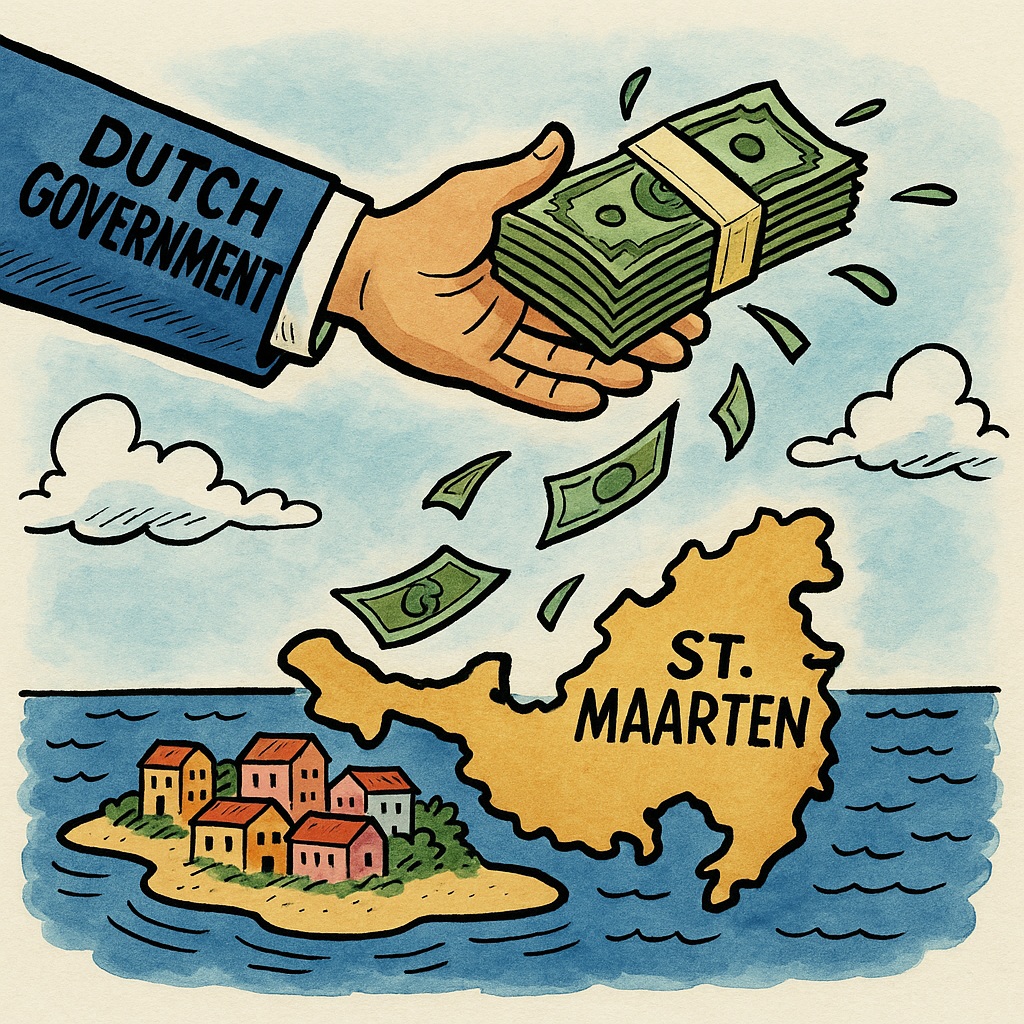
PHILIPSBURG — The Netherlands will extend a loan of 30.3 million guilders (XCG) to St. Maarten, based on a positive advice from financial supervisor Cft. The International Monetary Fund (IMF) has indicated that the country’s debt quote remains “manageable” on the condition that loans that mature during the next couple of years will be refinanced by the Netherlands.
This appears from the framework risk-regulations of the central Dutch government, published by outgoing state secretary for Kingdom Relations Eddy van Marum.
In its 2025 budget, St Maarten included investments for the purchase of emergency power generators, the building of a new prison, the purchase of IT-equipment and the purchase of land for the construction of social housing and community centers.
For these capital investments, St. Maarten requested the loan of 30.3 million guilders ($16.9 million). The Cft has confirmed that the budget meets the Rft-requirements and this has opened the door for Dutch financing. The 30-year loan comes with an annual interest of between 4 and 6 percent – the current return on investment on Dutch bonds. By granting the loan, the Netherlands contributes to the sustainability of St. Maarten’s debts, Van Marum writes in the report.
He adds that turning the loans into a gift is not acceptable because this would have a structural negative effect on the Dutch budget and it would not do justice to St. Maarten’s responsibility for the state of its economy and the national budget.
The report notes that there is always a risk that the country is unable to repay the loan. However: “The loan contributes to the sustainability of the public finances in St. Maarten. This decreases the need for new financial interventions from the Netherlands.” Furthermore, the report states that St. Maarten has always honored its obligation to pay interest and installments in the past.
Prognoses by the IMF indicate that the St. Maarten’s economic growth will continue and that the debt quote will continue to decrease. “This increases the resources St. Maarten has at its disposal to honor its obligations.”
The report concludes that the risks associated with the loan are considered acceptable in terms of probability, impact, exposure and level of control.
###
Related articles:
Diplomatic Cft remains critical of St. Maarten’s budget
![]()
Towards the inevitable abyss
By Hilbert Haar
I admit: I do not always fully understand how technocrats arrive at their conclusions, but at times, I do wonder.
This is for instance the case with the 30.3 XCG million loan ($16.9 million) the Netherlands will grant to St. Maarten. An analysis State Secretary Eddy van Marum (Kingdom relations) presented to the Second Chamber states – rather boldly, I thought – that the risks associated with this loan are acceptable.
Even the International Monetary Fund (IMF) contributed its two cents by stating that the country’s debt quote (49 percent, just under the recommended ceiling of 53 percent) will remain manageable. But this was a conditional statement. The IMF added that, to achieve this, loans that mature during the next couple of years, have to be refinanced by the Netherlands.
If I remember this correctly, refinancing loans happens when the lender, in this case the country of St. Maarten, is unable to meet its financial obligations. It is important to note here that the country has already refinanced other loans for this reason.
It is not difficult to conclude that St. Maarten is up to its proverbial eyeballs in debt and that it is unable to make the required payments. And yet, the Dutch government is prepared to extend anther multi-million guilder loan for capital investments.
Why? Ah, now that is a good question and the answer can be found in the legislation that came into being when St. Maarten became an autonomous country within the Kingdom of the Netherlands on October 10, 2010.
That autonomy came with financial supervision and the law on that topic contains a couple of provisions that keep St. Maarten out of financial hot water.
This law says for instance that the national budget has to meet certain requirements. Financial supervisor Cft checks every year whether this is the case. And when the bookkeepers, who are based in Curacao, find that, indeed, the budget meets these requirements, then the country can apply for a loan for capital investments, which is of course exactly what St. Maarten did.
The loan in question will enable the country to buy stuff it sorely needs, like emergency power generators and to invest in the construction of a new prison.
On the surface, one would think that this is a good thing, but I wonder whether this is really true. This particular loan will run for thirty years and every year it will take a bite out of the national budget (for interest and installments). That money cannot be used for things the country really needs to do, like investing in education or healthcare. And as one loans succeeds the previous one, St. Maarten’s debt will continue to grow.
Our politicians don’t really care about this because by the time the situation becomes unsustainable they will have left office and leave a solution to their successors.
The bottom line is, obviously, that St. Maarten continues to spend money it does not really have. The solution is rather obvious. Our government has to become serious about collecting taxes and it has to make sure that it does not spend more money than it has at its disposal.
Sigh; if only it was that easy. If things continue the way they do at the moment, I see St. Maarten moving slowly but surely towards the inevitable abyss. And trust me, you don’t want to be there when the shit hits the proverbial fan.
###
ADVERTISEMENT













